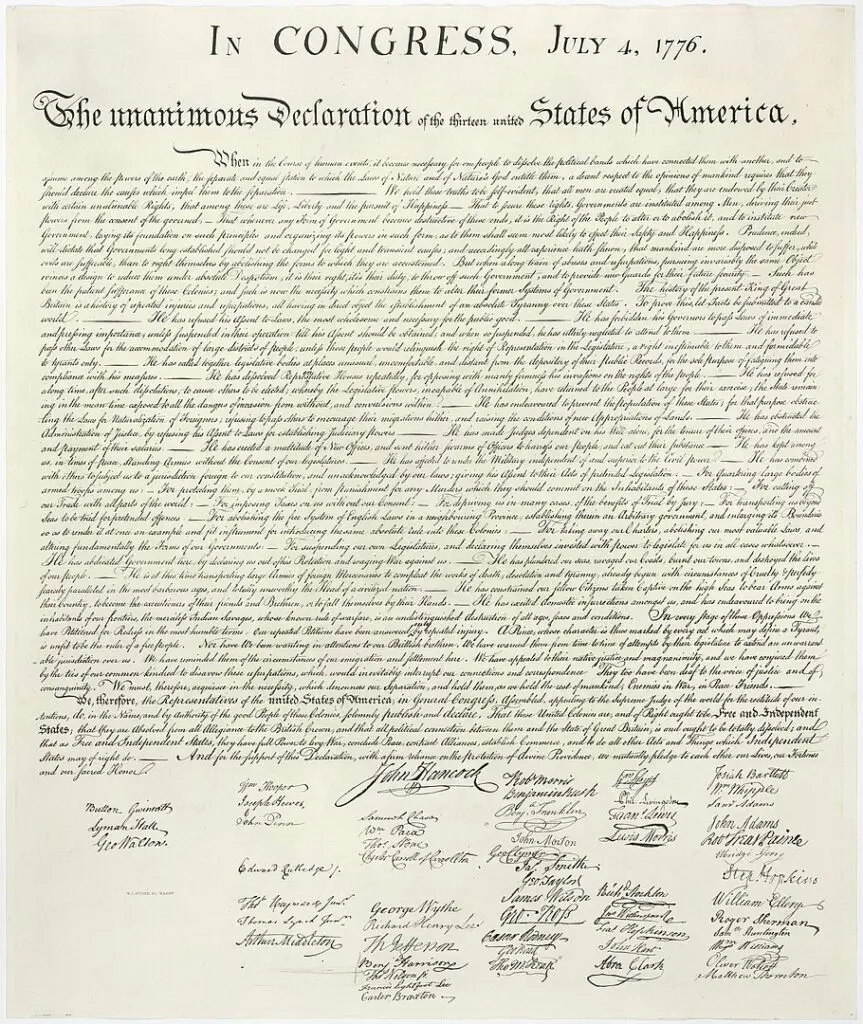Let’s not forget the ideals that started us on this American journey in 1776, with the Declaration of Independence written by the great communicator Thomas Jefferson:
- Equality: “We hold these truths to be self-evident, that all men are created equal, that they are endowed by their Creator with certain unalienable Rights, that among these are Life, Liberty, and the pursuit of Happiness.”
- The Social Contract: “That to secure these rights, Governments are instituted among Men, deriving their just powers from the consent of the governed.”
The Declaration of Independence is a radical manifesto wrapped in Enlightenment philosophy, calling for the right to self-determination in the face of tyranny. Its major themes pivot on the idea of natural rights—life, liberty, and the pursuit of happiness—as inherent to all people, not privileges bestowed by a monarch.
The document lays out a scathing critique of King George III, cataloging his abuses and injustices, from imposing taxes without consent to obstructing the colonies’ right to self-governance. The Declaration is not merely a break-up letter from the colonies to Britain, but a bold assertion that governments exist to serve the people, not the other way around. When a government fails in its duty, revolution is not just a right, but a moral obligation.
It’s an embodiment of defiance against authoritarianism, echoing in modern movements that demand equity, justice, and the right to reshape oppressive systems. But like many historical documents, it leaves out the stories of those who didn’t benefit from its vision—namely, enslaved people, women, and Indigenous populations. The Declaration, while revolutionary, reflects the contradictions of its time—offering a framework for freedom that has continually required reinterpretation to live up to its full promise.

Comments are closed.